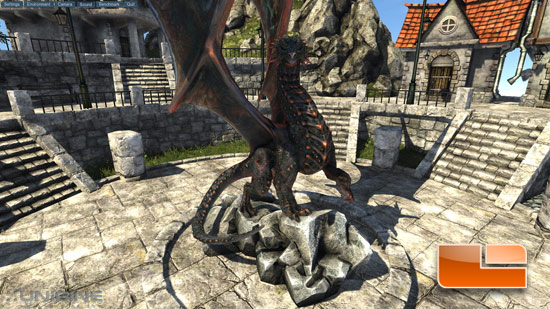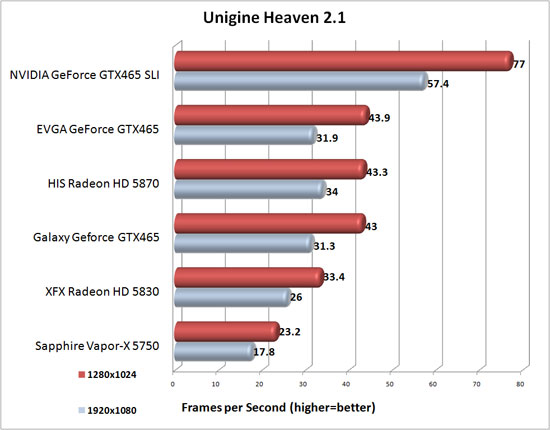EVGA and Galaxy GeForce GTX 465 SLI Video Card Review
Unigine Heaven 2.1

The ‘Heaven’ 2.1 benchmark that uses the Unigine easily shows off the full potential of DirectX 11 graphics cards. It reveals the enchanting magic of floating islands with a tiny village hidden in the cloudy skies. With the interactive mode emerging, experience of exploring the intricate world is within reach. Through its advanced renderer, Unigine is one of the first to set precedence in showcasing the art assets with tessellation, bringing compelling visual finesse, utilizing the technology to the full extent and exhibiting the possibilities of enriching 3D gaming. The distinguishing feature of the benchmark is a hardware tessellation that is a scalable technology aimed for automatic subdivision of polygons into smaller and finer pieces so that developers can gain a more detailed look of their games almost free of charge in terms of performance. Thanks to this procedure, the elaboration of the rendered image finally approaches the boundary of veridical visual perception: the virtual reality transcends conjured by your hand.

For this benchmark VSync was turned off and we tested with 0x AA and 4x AF to check out system performance. We also ran the benchmark at 1920×1080 and 1280×1024 to see how the benchmark ran at some different monitor resolutions.

Benchmark Results: Unigine Heaven 2.1 is a very demanding application when it comes to DirectX 11 and Tessellation. Both of the NVIDIA GeForce GTX 465’s we are looking at today were able to keep up with the flagship single GPU Radeon HD 5870. The 17MHz boost to the EVGA GeForce GTX 465 SC edition was just enough to edge out the Radeon HD 5870!

Comments are closed.